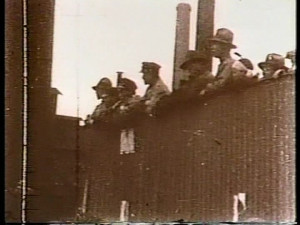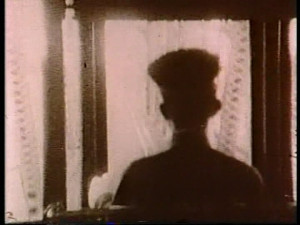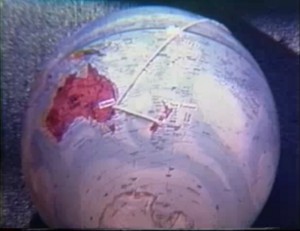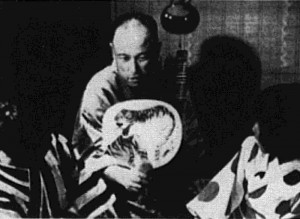
"Prokino recorded the May Day every year from 1927 to 1932. Among these films, this work is the only one that has survived. However, only its first part has survived. The original film depicts the march to the Ueno Park where the rally was dismissed."
"201-203 tells the simple story of man and woman, the alienated anti-heroes from two civilizations at the opposite ends of the spectrum, Asian and America. They try to make contact, through reality as well as fantasy, against a backdrop of technology and pop theology. Well acted and well photographed" PSA Journal, Aug. 1967, 36.

"Prokino established a newsreel unit. They shot strikes and other current events, then went out to show their films. This film concerns striking bus and trolley workers, who were often in the news. A typical agit-prop film, it contains elements of performance and reenactment."

"In May-June 1988, Robbins Barstow and his wife Meg, of Wethersfield, Connecticut, USA, made a six-week trip around the world. Places visited include Hawaii, Austrailia, New Zealand, Singapore, Thailand, India, and London, England." Archive.org

"A delightful bit of drama filmed by Kazuo Nakamura again illustrates that one does not have to travel far from his home to film a picture. This was filmed in Japan and one may assume that the maker had the cooperation of a local dramatic group. Mr. Nakamura has shown his skill and accomplishment in the finished product. It is a story within a story. The father tells his young son and daughter about the legend of the arrow which comes from nowhere to fall upon a roof. That home must sacrifice a daughter to some unknown person which in the story is a terrible old tiger. The animal, in the disguise of a man meets his fate at the hands of a god who disappears as mysteriously as he had appeared, while the villagers dance and celebrate their freedom. The children are now fast asleep. Although their native language is heard throughout, the story is easily followed. The costuming and acting are superb in their simplicity." PSA Journal, Nov. 1957, 32.
Film on Puri leper potters and their methods. Japan. Calcutta. Pegu, Burma; Kuala Lumpur, Bienhoa, French Indochina; Annam.
"Col. Kelly took the time to use his camera effectively on an assignment in Korea where the older folks are referred to with family reverence as Papa-san and Mama-san. Here we have a review of life in Korea as an Army officer may see it. After the war there is reconstruction and training of the 4th largest standing army in the world. A country divided at the 38th parallel must live under the protection of a well-trained army, trained by U.S. personnel. A documentary-travelogue that lives all of its 25 minutes of screen time" PSA Journal, Nov. 1959, 47.
"Like the title, it is really 'Beyond Manila.' It takes the follower into a country that has been little photographed, one part of that territory being the land of the Igorrote, in Northern Luzon. There is much to be seen of the people, the way they dress and live and work. There's abundant scenic beauty in the Philippines. We see many evidences of it in the pictures here shown of mountain and plain—of stream and waterfall. The natives, too, are real workers, women as well as men." American Cinematographer, Jan. 1939, 16.
"In China's Gifts to the West, we have what may be termed a tour de force of cinematic cutting. The most interesting part of the film is made up of a series of beautifully composed and photographed "stills," but the duration of each of these shots is so carefully timed that the entire sequence is fused into a relationship which conveys a distinct impression of cinematic motion — perhaps not "motion" in the ordinary sense of physical activity, but rather the deeper and more fundamental activity of the mind as it contemplates, one after the other, the various ideas which make up the unity of a conception. This has been accomplished by Mr. Space in his excellent choice of illustrations, which are projected into the mind in exactly the right order and appearance. Beside this purely cinematic achievement, the maker of the film is to be congratulated on his excellent taste in selecting and displaying objects of art to the best advantage. The photographic technique employed in producing closeups and ultra closeups of fabrics, china and other materials is undeniably pretty close to perfection." Movie Makers, Dec. 1936, 551-552.
"A Chinese and an American boy find China's products in the latter's home." The Educational Screen, Jan. 1946, 23.
Total Pages: 6